Cosmic Context of Greek Philosophy (2)
Read the first part of the article
Plasma Cosmology
My discussion in the book Horns of Moses includes a simplified explication of Plasma Cosmology that, though short, is still too long to include here since I am only trying to give enough background for the reader to understand my discussion of the Greek philosophers. So this is the seriously abbreviated version.
Plasmas are the most common phase of matter in the universe, both in terms of mass and volume. All the stars are made of plasma, and even interstellar space is filled with plasma. This is widely acknowledged by astronomers and physicists. However, when anyone attempts to go further than that, the authoritarians come out in force and invoke Einstein. (That’s a topic for another day.)
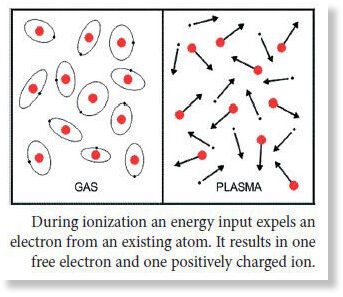
In Plasma Cosmology, the central idea is that the dynamics of ionized gases (or plasmas) play the main role in the physics of the universe at the scale of planets, solar systems, galaxies and further.
Many of the ideas of plasma cosmology came from 1970 Nobel laureate Hannes Alfvén. Alfvén proposed the use of plasma scaling to extrapolate the results of laboratory experiments and space plasma physics observations to scales orders-of-magnitude greater. The Einstein cultists certainly acknowledge that plasma physics plays a major role in many, if not most (they will admit), astrophysical phenomena, but they protest that many of the conclusions of plasma physics experiments performed in laboratories just can’t be the explanation for the heavenly phenomena because they would ‘contradict Einstein’!
For mainstream science, gravity is the main force controlling celestial bodies’ behavior, despite the fact that electromagnetic forces are stronger than gravitational forces by a magnitude of 1039, making electromagnetism the de facto driving force in our universe.
Alfvén wrote a paper in 1939 supporting the theory of Kristian Birkeland, who had written in 1913 that what is now called the solar wind generated currents in space that caused the aurora. Birkeland’s theory was disputed at the time and Alfvén’s work in turn was disputed for many years by the British geophysicist and mathematician Sydney Chapman, a senior figure in space physics, who argued the mainstream view that currents could not cross the vacuum of space and therefore the currents had to be generated by the earth. However, in 1967, Birkeland’s theory, referred to previously as fringe, was proved to be correct after a probe was sent into space (i.e. observation hypothesis, experiment). These magnetic field-aligned currents are now named Birkeland currents in his honour.
A Birkeland current is simply an electron flow within plasma in the same way that an electric wire carries electrons. Birkeland currents have a filament shape because they are pinched by the magnetic force generated by the current itself. Like in a classic wire, Birkeland currents occur when an electric potential difference occurs between two regions of space. then currents will form and tend to balance the potential of the two regions through electronic migration.
To understand the electric interaction between the sun and its planets, we need to remember that one fundamental law of plasma theory is that in space, any electrically charged object generates an insulating bubble around it. This insulating sheath is called a Langmuir sheath named for Irving Langmuir (1881-1957), American chemist and physicist. Winner of the 1932 Nobel Prize in chemistry.
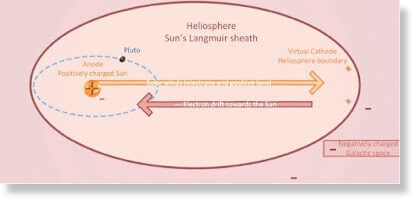
Like most celestial bodies, the Sun has its own Langmuir sheath, which extends almost 100 au (100 times the Sun-Earth distance) outwards. It’s also called the ‘heliosphere’. Electrically, the Sun-heliosphere couple acts like a giant condenser; the Sun being the positive electrode (anode) and the internal surface of the heliosphere being the negative electrode (cathode). Objects (comets, planets etc.) in the heliosphere can trigger electrical discharges from the sun (solar flares, sunspots, CMEs, etc.
Winston H. Bostick, ((1916-1991), American physicist who discovered plasmoids, plasma focus, and plasma vortex phenomena, carried out laboratory experiments in the 1950s by vaporizing titanium wires with a 10,000 A current, which turned them into plasma. his experiments were “the first to record the formation of spiral structures in the laboratory from interacting plasmoids and to note the striking similarity to their galactic analogs.” Bostick was another who pointed out quite reasonably that plasma scaling applied to these laboratory experiments and demonstrated that galaxies had initially formed from plasma under the influence of a magnetic field.
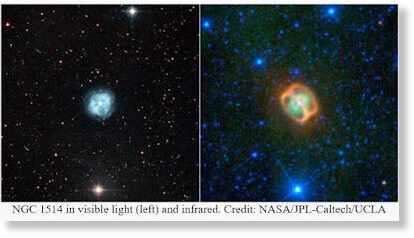
Computer simulations of colliding plasma clouds by Anthony Peratt, (American physicist specialized in plasma who has been working for the Los Alamos National Laboratory since 1981), in the 1980s also mimicked the shape of galaxies.

The simulation in the image above shows the cross-section of two plasma filaments joining in what is called a z-pinch; The filaments start out at the equivalent of 300,000 light years apart and carry Birkeland currents of 1018 amps. The simulations also showed emerging jets of material from the central buffer region, which resembles that observed from quasars and active galactic nuclei, which are attributed to ‘black holes’ according to Einsteinian physics.
What was fascinating was that, letting the simulation continue to run revealed “the transition of double radio galaxies to radioquasars to radioquiet QSOs to peculiar and Seyfert galaxies, finally ending in spiral galaxies.” (Peratt & Green (1983), On the Evolution of Interacting, Magnetized, Galactic Plasmas. Peratt (1986), Evolution of the Plasma universe: ii. the Formation of systems of galaxies)
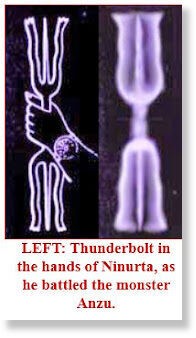
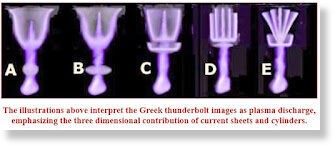
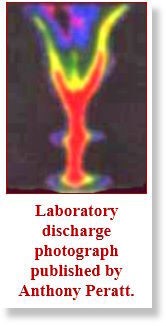
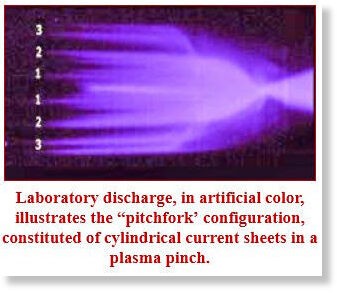
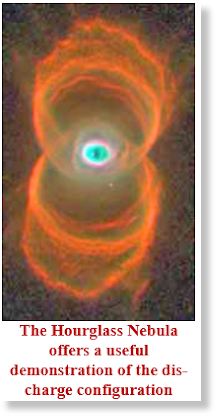
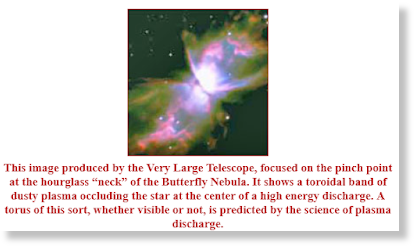
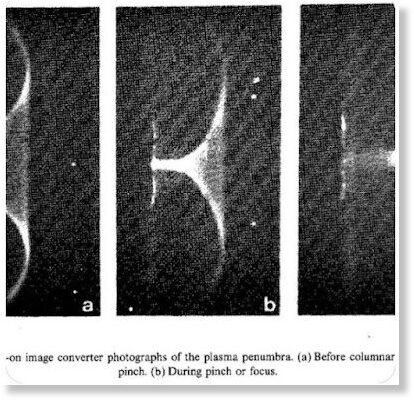

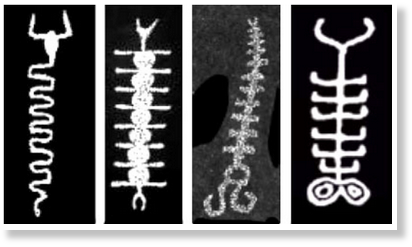
In short, many of the truly odd phenomena of the universe that are inexplicable – or explainable only with the most bizarre and contradictory ideas in an effort to support Einstein’s relativity – turn out to be a natural evolution of electromagnetic phenomena.
The simulation accounted for flat galaxy rotation curves without having to introduce exotic elements such as dark matter in order to make the equations work. This is blasphemy since the discrepancy between observed galaxy rotation curves and those simulated based on Einsteinian gravity has had to be explained exactly that way: sheer invention of something to make the square peg fit the round hole. However, as Peratt’s experiments demonstrated, a flat rotation curve emerges quite naturally in a galaxy governed by electromagnetic fields, the spiral arms of galaxies are like rolling springs that have the same rotational velocity along their length. In other words, a galaxy is the physical and visible part of gigantic currents flowing through space.
In an electric universe, spinning galaxies, orbiting celestial bodies, spinning planets and stars, not to mention more mundane things like tornadoes and cyclones, are the logical consequences of Birkeland currents and the rotating electromagnetic fields they induce.
Plasma cosmology proposes that cometary comas and tails are produced by an electrical exchange between the sun and a comet. The coma is the Langmuir sheath of the comet. The intense electric field around the comet triggers massive discharges (hence the intense glow). These discharges also appear as jets which erode the surface of, and eject matter away from, the comet. The tail is made of this ionized ejecta which remains cohesive because it forms electromagnetically guided Birkeland currents. Mainstream scientists are getting rather close to acknowledging this by calling the unexplained brightening of comet Linear in 2000, a “charge exchange reaction.” That is approaching heresy in the Einstein cult. The facts are that, before Einstein came along and ruined science, there were already speculations leading to an understanding of the electrical nature of the universe.
For example, in the late 19th century, Scientific American (27 July 1872, p. 57). published an article stating that Professor Zollner of Leipzig ascribes the “self-luminosity” of comets to “electrical excitement.” Zollner proposed that “the nuclei of comets, as masses, are subject to gravitation, while the vapors developed from them, which consist of very small particles, yield to the action of the free electricity of the sun.” Then the 11th august 1882 issue of English Mechanic and World of Science (pp. 516-7) wrote regarding comet tails: “there seems to be a rapidly growing feeling amongst physicists that both the self-light of comets and the phenomena of their tails belong to the order of electrical phenomena.” In 1896, Nature (no. 1370, vol. 53, Jan 30, 1896, p. 306) published an article stating that “it has long been imagined that the phenomenon of comet’s tails are in some way due to a solar electrical repulsion, and additional light is thrown on this subject by recent physical researches.”
But then, along came Einstein and science fell into a genuine black hole!
In the 1960s, an engineer named Ralph Juergens, who had worked as a technical editor at the McGraw-Hill publishing house, proposed that the Sun was a positively charged body at the center of an electrical system and that the Sun was itself the focus of a cosmic electric discharge which was the source of its energy – not the old E = MC2 routine.
Read the third part of the article
Author: Laura Knight-Jadczyk
yogaesoteric
September 21, 2023
